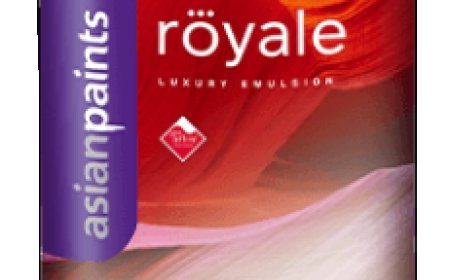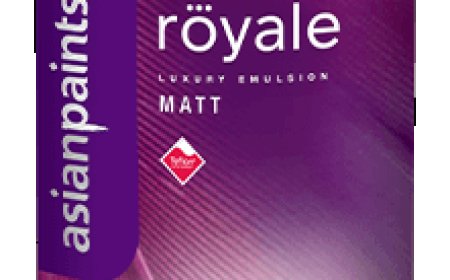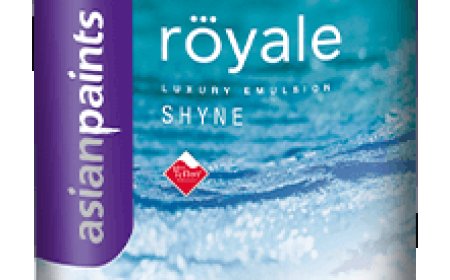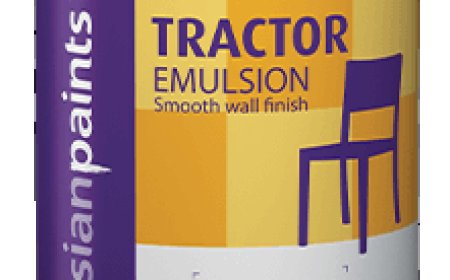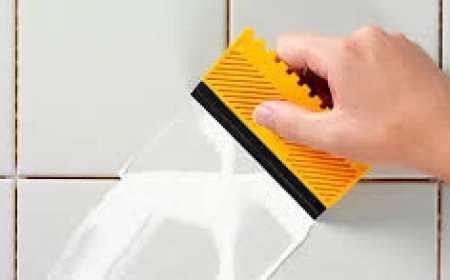What are the different types of Paints for Interior and Exterior Walls?
What are the different types of Paints for Interior and Exterior Walls? The type of paint you use on your walls can significantly affect how they look, how long they last, and how much maintenance they need. The overall look of your walls can be affected by the different paint types, which offer a range of finishes from glossy to matte. There are differences in durability as well; certain paints are harder to break down to damage, dampness, and even severe weather when applied outside. There are also differences in the maintenance requirements of different paints; some may need more frequent touch-ups or cleanings. In order to choose the right paint kind for your project, it is important that you take into account these variables.

What are the different types of Paints for Interior and Exterior Walls?
Introduction to Paint Types
Understanding the Importance of Choosing the Right Paint
The durability and beauty of the paint you choose for your interior and exterior walls cannot be overstated. Interior wall paints that are simple to maintain, such latex or emulsion, can improve the look of your living areas. Paints designed for exterior walls, such masonry or acrylic paint, shield your walls from bad weather and maintain their look. When choosing paint, keep in mind that details like weather resistance, longevity, and finish might make a major difference down the road.
The type of paint you use on your walls can significantly affect how they look, how long they last, and how much maintenance they need. The overall look of your walls can be affected by the different paint types, which offer a range of finishes from glossy to matte. There are differences in durability as well; certain paints are harder to break down to damage, dampness, and even severe weather when applied outside. There are also differences in the maintenance requirements of different paints; some may need more frequent touch-ups or cleanings. In order to choose the right paint kind for your project, it is important that you take into account these variables.
Interior Wall Paints
Emulsion Paint
There are various reasons why interior walls frequently get painted with emulsion paint. To begin with, you have alternatives to match your style because it comes in several finishes like satin or matte. It's excellent for do-it-yourself tasks because it's simple to apply. Painting projects can be completed more rapidly with emulsion paint because it dries swiftly as well. In addition to being stain and damage waterproof, it is also easy to clean, extending the life of your walls' looks. All things considered, emulsion paint is a practical and adaptable option for decorating your interior areas.
There are several finishes to pick from when painting your walls, and each one gives your room an original look and atmosphere. Matte finishes have a smooth, velvety appearance and are ideal for masking problems on your walls. Perfect for high-traffic areas like living rooms and hallways, eggshell finishes feature an understated shine and are simple to maintain. For bathrooms and kitchens where moisture is an issue, satin finishes are perfect because they provide a little sheen and a little extra longevity. You can simply pick the ideal finish to fit your demands and style with the variety of options available.
Latex Paint
Latex paint is a popular option for painting interior walls due to its flexibility and simplicity of usage. It's easy to clean up with simply soap and water, and it dries rapidly, allowing you to finish painting quicker. Latex paint is an excellent choice for anyone wishing to update their living area because it is easy to apply and forgiving, no matter what experience level. You can simply choose the ideal shade to complement your décor because it is available in a broad variety of colors and finishes.
It's important to compare interior wall paint kinds taking into factors like overall finish, application flexibility, and durability. For example, emulsion paints are a popular option among homeowners due to their smooth texture and ease of application. It may take more work to apply and clean oil-based paints, but they offer a more resilient and long-lasting finish. Latex paints provide good durability and ease of application, striking a compromise between the two. You may select the ideal paint kind for your interior walls based on your needs and tastes by being aware of these differences.
Oil-Based Paint
For interior walls in many homes, oil-based paints are a popular choice because of their high gloss and remarkable longevity. These paints are perfect for high-traffic areas or places that require frequent cleaning since they produce a durable, long-lasting surface that will withstand wear and tear. Oil-based paints also provide walls a beautiful glossy aspect that gives them a rich and elegant appearance due to their high sheen. It's important to remember, too, that oil-based paints can take longer to dry and may release strong smells when applied, so enough air is important. All things considered, oil-based paints' longevity and gloss make them a dependable choice for interior walls that have to last over time.
When it comes to applying and maintaining your chosen paint, there are a few key considerations to keep in mind. Firstly, ensure that the surface is properly prepared before painting to achieve the best results. This includes cleaning, sanding, and priming the walls as needed. Additionally, follow the recommended application techniques for the type of paint you've chosen, whether it's brushing, rolling, or spraying. Once the paint is applied, allow it to dry and cure fully before touching or cleaning to avoid any damage. Regular maintenance, such as gentle cleaning with mild soap and water, can help prolong the life and appearance of your painted walls. By paying attention to these considerations, you can ensure a smooth application process and keep your walls looking fresh for years to come.
Chalkboard Paint
It is important to think about how you will paint your walls and how you are going to maintain them once you have finished. Start by thoroughly cleaning and priming the surface. Then, choose the appropriate tools for the job, such as a brush, roller, or sprayer. Allow the paint to completely dry before handling or cleaning it after application. When it comes to upkeep, avoid damaging the finish by using gentle cleaning methods. Observing these guidelines guarantees a seamless application process and delays the life of your walls.
Choosing the right paint kind and application technique for a given surface can significantly impact painting results. Oil-based paint is more appropriate for surfaces made of wood and metal, although emulsion paint looks great on plastered walls and ceilings. Use the right tools for the job, such as brushes, rollers, or sprayers, and make sure the surface is thoroughly cleaned and prepared before painting. A long-lasting professional finish can be achieved by selecting the appropriate paint and applying it correctly.
Exterior Wall Paints
Acrylic Paint
Acrylic paint is a popular choice for external walls due to its superior weather resistance and durability. It creates a robust barrier that keeps out sunlight, rain, and extremely hot and cold temperatures. Your external walls will look fantastic for longer thanks to its protection against damage including peeling, fading, and cracking. Acrylic paint is additionally flexible, which increases its ability to last by enabling it to expand and contract in response to temperature variations. Your external walls will remain safe and in top condition for many years to come if you paint them using acrylic paint.
Acrylic paint has a number of benefits over other exterior wall paint kinds when it comes to painting the exterior of your home. One of the most significant advantages is its exceptional durability, which makes it suitable for handling extreme outdoor situations like as rain, wind, and sunlight. You can save time and effort when painting because acrylic paint is easy to apply and dries rapidly. The long-lasting finish it offers reduces the need for regular touch-ups or repainting because it keeps its color and look for years to come. For improving the look and durability of the external surfaces of your house, acrylic paint is a general flexible and long-lasting choice.
Masonry Paint
Masonry paint has unique qualities that make it perfect for outdoor use, and it is specially developed for outside wall surfaces. A significant characteristic of this material is its excellent attaching to a variety of masonry materials, including brick, concrete, and plaster, offering a long-lasting and resilient surface. Furthermore, masonry paint is engineered to survive harsh weather conditions such as rain, snow, and UV exposure without fading or cracking. Its flexible nature helps moisture to exit the walls, reducing dampness and mold growth. Masonry paint is a specialist paint that provides your home's external surfaces with both protection and beauty.
Masonry paint is a great option if you want to shield your external walls from mildew, moisture, and other elements. Its unique formula helps to build a barrier that keeps water out of the wood, lowering the possibility of moisture-related damage like rot and mold growth. The outside surfaces of your house will also be long-lasting and protected because to masonry paint's capacity to tolerate harsh elements such as UV rays, rain, and temperature changes. The structural soundness and decoration of your walls can be preserved while reducing long-term maintenance and repair expenses by applying masonry paints.
Elastomeric Paint
The flexibility and durability of rubber paint make it an excellent option for external walls. The capacity of elastomeric paint to expand and contract with the building's natural movement, in contrast to standard paints, provides long-lasting durability and keeps cracks from forming. Its elastic characteristics also prevent it from flaking, peeling, and blistering—even in the most severe weather. It also means that you won't need to do many touch-ups or repairs over the years to keep your external walls showing new and well-maintained.
It's important to think about where you live and which directions your walls will face when choosing paint for your outside walls. For example, if you live in a hot, sunny climate, you'll want paint that can tolerate UV radiation and high temperatures, such as elastomeric. But, if you live in a wet climate, you'll need a paint like acrylic paint that can ward off moisture and avoid the growth of fungus. You can choose the best paint for your external walls and guarantee that they will look fantastic and stay looking good for many years to come by being understanding of your climate and the unique challenges it brings.
Specialized Paints for Specific Needs
Anti-Mold and Mildew Paint
Anti-mold and mildew paints are an excellent choice for moisture-prone sections of your home, such as bathrooms, kitchens, or basements. These paints have chemicals that stop the formation of mold and mildew, keeping your walls hygienic and smelling good. Anti-mold and mildew paint extends the life of your walls and helps stop unattractive smells and spots caused by mold and mildew. These paints are also frequently safer for you and your family because they include less volatile organic compounds (VOCs). All in all, purchasing anti-mold and mildew paint is a wise decision if you want to keep your home tidy and comfortable.
It's crucial to take steps and follow to some basic care guidelines to keep your walls looking fantastic and safe from harm. Make sure to frequently check your walls for damage indicators, including cracks or peeling paint, and take immediate action to stop any damage. In order to safeguard the coating and keep your walls showing new, paint them a fresh coat every few years. In addition, remember to routinely clean your walls using a mild detergent and water solution to get rid of dust, dirt, and other material that might build up over time. By staying active and following these care guidelines, you can extend the life of your walls and keep them looking great for years to come.
Heat-Reflective Paint
If you want to reduce your energy expenses and keep your home at a nice temperature, heat-reflective paints are a great choice for your external walls. These paints are designed specifically to reflect sunlight off the walls, which lowers heat absorption and keeps the interior cooler in hot weather. Heat-reflective paints can assist in lowering the demand for air conditioning by decreasing heat transfer through the walls, which can lead to less costly energy costs and a smaller carbon footprint. These paints can also assist extend the life of outdoor surfaces by decreasing thermal stress and UV damage. All things considered, painting your home with heat-reflective paint is an economical and environmentally friendly way to increase comfort and energy efficiency.
There are a few important steps to remember when painting your walls in order to achieve optimal results. First, clean and prime the surface before painting. The type of paint you're using and the surface's texture will determine which equipment are best for the job—use a brush, roller, or sprayer, as needed. To create a uniform finish, apply the paint evenly in clean, overlapping strokes, allowing each coat to completely dry before applying the next. These application tips will help you apply paint smoothly and effectively, giving you a long-lasting, professional-looking finish.
Eco-Friendly Paint Options
It's important to take environmental factors into account when selecting paint for your walls, as these can reduce damage to both the environment and your health. To avoid painting your home with dangerous chemicals, look for paints established as zero- or low-VOC (volatile organic compounds). These paints are superior for both the environment and the quality of the air within your home. It's also a good idea to take into account water-based paints, which are less harmful to the environment. You may make your house healthier and leave a smaller carbon footprint by choosing eco-friendly paint for your external and interior walls.
You should think about how paint will affect the environment and your health when selecting a paint for your walls. Selecting paints that are low in volatile organic compounds (VOCs) and environmentally friendly can help minimize toxic gases and reduce indoor air pollution. To make sure a paint has less dangerous chemicals, look for labels that say "low-VOC" or "zero-VOC". To reduce your overall environmental impact, take into account the paint's green manufacturing process and packaging materials. You may make your home safer and greener for you and your family by giving sustainability and active paint options first priority when choosing paint.
What's Your Reaction?







